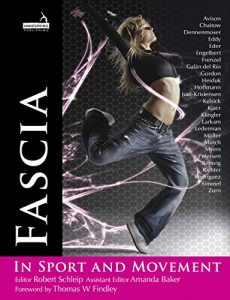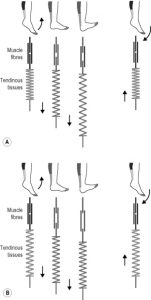 Fascia is the buzz word du jour in movement practice and treatment these days. You’ll probably hear the phrase in my classes. But what does it really mean, and what are the implications?
Fascia is the buzz word du jour in movement practice and treatment these days. You’ll probably hear the phrase in my classes. But what does it really mean, and what are the implications?
Robert Schleip is one of the foremost anatomists working in this area, and author of many works on the topic. There are possibly few better qualified to bring a work like this together.
The first part of the book addresses theory – the what, how and why. The second applications in a wide number of disciplines from yoga through running to football.
There is much useful content in here, and a short review like this can’t do it justice. For someone new to fascia you would need to dip into the book several times, and maybe spend a bit of time with the second part on clinical application before delving into the theory; for those with some body work knowledge or experience, this book will refine that; for people with anatomy training, there is arguably no such thing as too much knowledge and this book can help refine, embed and develop existing understanding.
However, be under no illusion, this is a technical work, and more suited to experienced practitioners, teachers or body workers rather than beginners.
There are many contributing authors. Thomas Myers contributes a chapter distilling Anatomy Trains down to its basics. Joanne Avisionwrites a useful chapter on Fascial Form in Yoga – both a taster for her own book on the topic and a neat summary of how we need to blend traditional movement practice with modern understanding as we move toward an intelligent approach to Yoga Asana in a modern world.
 Schleip himself writes very accessibly on elastic storage and recoil dynamics, and how the interactions between muscle and facial connective tissue changes as the pace and nature of movement changes – Kangeroo jumping v Frog hopping is the analogy used (image adapted from Kawakami et al. 2002 and musculoskeletalkey.com).
Schleip himself writes very accessibly on elastic storage and recoil dynamics, and how the interactions between muscle and facial connective tissue changes as the pace and nature of movement changes – Kangeroo jumping v Frog hopping is the analogy used (image adapted from Kawakami et al. 2002 and musculoskeletalkey.com).
In summary I found this a useful work to refine and embed exiting knowledge. Its not an entry level work, and it has considerable inherent complexity, but it takes things at a sensible pace and represents approachable reading on the topic.
You can buy Fascia in Sport and Movement by Robert Schleip on Amazon and if you use this link, Yinspire earns a small commission
http://amzn.to/2nE2VAs

